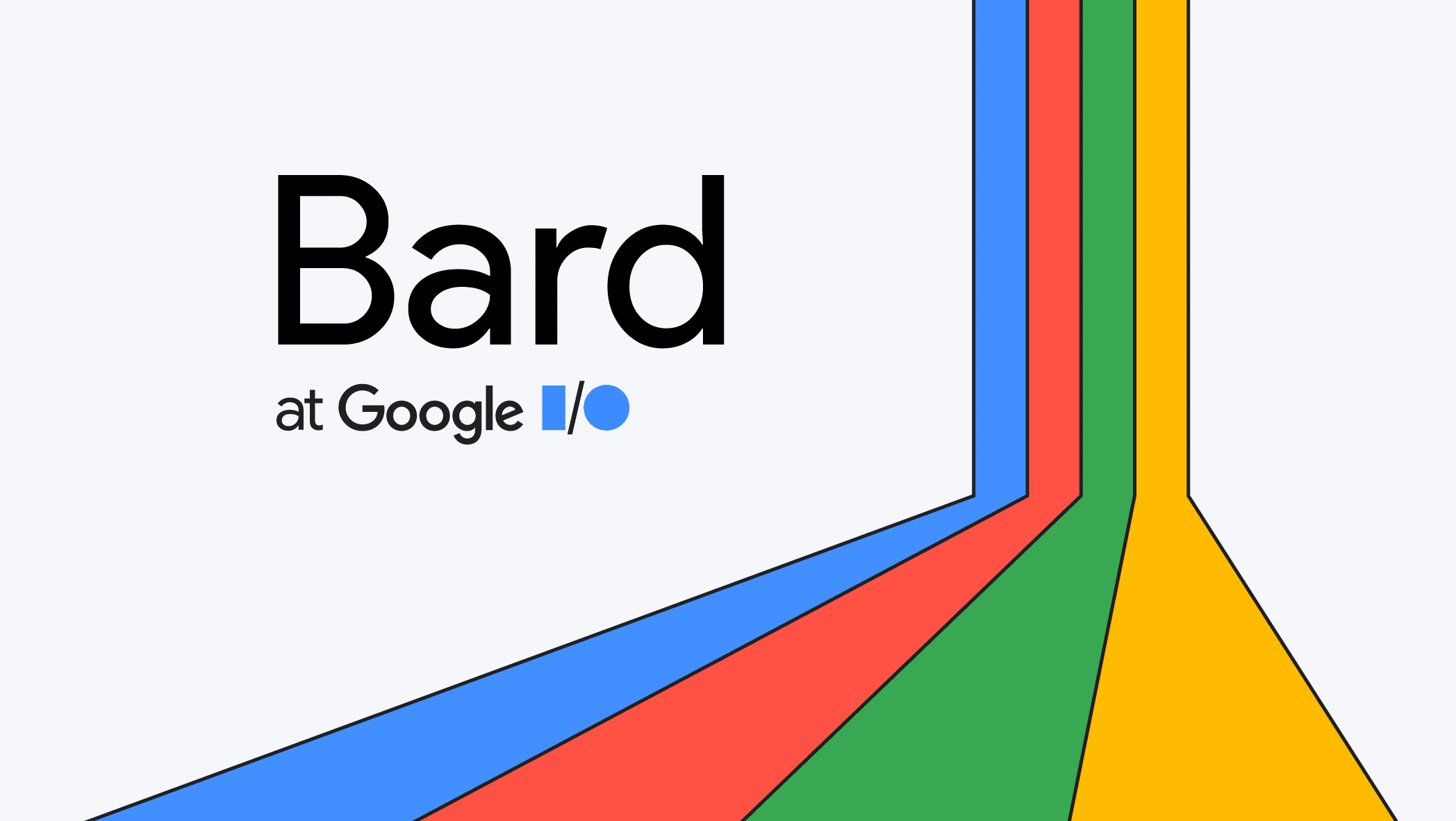ChatGPT vs BARD: Which AI Is Right for Your Business?
Article Updated on June 6, 2023
As artificial intelligence (AI) continues to grow and evolve, businesses are increasingly turning to AI-powered language models to gain a competitive edge. In this article, we’re going to break down ChatGPT vs BARD, to find out which will give you the most competitive edge.
ChatGPT is a language model created by OpenAI. It uses deep learning techniques to generate human-like responses to natural language queries. Google BARD, on the other hand, is a language model developed by Google, specifically designed to generate natural language responses to questions in a way that mimics human thought processes.
ChatGPT and BARD are both large language models (LLMs) that have been trained on a massive amount of text data. They can both generate text, translate languages, write different kinds of creative content, and answer your questions in an informative way
When it comes to ChatGPT vs BARD, they both have their own unique features and benefits, making them ideal for different types of businesses and use cases. But with so many options available, how do you choose which one is right for your business?
Whether you’re looking to enhance your customer service capabilities or streamline your operations with AI-powered automation, understanding the differences between ChatGPT and Google BARD can help you make an informed decision and get the most out of these powerful AI tools.
So let’s dive in and explore the world of AI language models!
What is ChatGPT?

ChatGPT is a cutting-edge language model designed to revolutionize the way businesses interact with their customers. It is an AI-based chatbot that uses natural language processing (NLP) to understand and respond to customer inquiries, complaints, and feedback in real-time.
One of the key advantages of ChatGPT is that it can handle a high volume of customer interactions simultaneously. This means that businesses can provide prompt and efficient customer service without having to employ additional staff. ChatGPT also operates 24/7, which allows businesses to provide customer support outside of traditional working hours.
While ChatGPT is an advanced technology, it is not perfect. One of the limitations of ChatGPT is that it may struggle to understand more complex queries or requests. Additionally, ChatGPT may not be able to provide the same level of empathy and personalization that a human customer service representative could.
In terms of use cases, ChatGPT can be used in a variety of industries, including e-commerce, healthcare, and finance. It can assist customers with product or service inquiries, schedule appointments, and provide technical support. ChatGPT can also be used to improve lead generation and sales by offering personalized recommendations and promotions to customers.
Several major businesses are already using ChatGPT to improve their customer service, including Mastercard, Airbnb, and Uber.
In the next section, we will discuss Google BARD and how it compares to ChatGPT. By understanding the similarities and differences between these two technologies, businesses can make an informed decision on which solution is right for their specific needs.
What is BARD?

BARD, which stands for “Bidirectional Encoder Representations from Transformers-Deconstructed,” is an AI language model that was introduced by Google in 2020, and is available to be tested in the public Beta since 2023.
It is designed to provide a more accurate and natural language response system for businesses and individuals. In this section, we will explore the features, advantages, limitations, use cases, and examples of businesses using Google BARD.
Bard is a transformer-based model that uses advanced machine learning techniques to understand and respond to complex queries. It is built on top of Google’s Tensorflow framework, which enables it to process massive amounts of data and provide accurate responses to user queries.
One of the most significant features of Google BARD is its ability to generate high-quality natural language responses. This means that businesses can use Google BARD to provide more accurate and engaging responses to their customers’ queries, which can help improve customer satisfaction and retention.
Another advantage of Google BARD is its ability to learn and adapt to new situations. Google BARD can analyze user feedback and adjust its responses accordingly, which helps to improve the accuracy and effectiveness of its responses over time.
Despite its many advantages, Google BARD has some limitations that businesses should be aware of. One of the main limitations of Google BARD is its computational requirements. Because Google BARD is a highly sophisticated AI model, it requires a significant amount of computing power to operate effectively.
Google BARD has a wide range of potential use cases for businesses. One of the most obvious use cases is in customer service and support. By using Google BARD to provide natural language responses to customer inquiries, businesses can improve their customer satisfaction and retention rates.
Several businesses have already started using Google’s AI language model to improve their customer service and engagement. For example, a business using BARD is chatbot provider Acobot. Acobot uses Google BARD to provide natural language responses to customer inquiries, which has helped to improve customer satisfaction and retention rates for its clients.
Which One Is Right for Your Business?
Now that we’ve explored the features, advantages, limitations, use cases, and examples of both ChatGPT vs BARD, it’s time to determine which one is right for your business. Here are some factors to consider when choosing between these two AI language models:
Use case: What is the specific application you have in mind for an AI language model? Does it involve generating natural language text or answering complex queries? Both ChatGPT and Google BARD have their own strengths and weaknesses in terms of their use cases.
Our Verdict: ChatGPT is well-suited for generating natural language text, such as writing product descriptions, email responses, and social media posts. On the other hand, Google BARD is better at answering complex queries, such as medical diagnoses or financial forecasting.
Business size and budget: The cost of implementing AI language models can vary greatly depending on the size of your business and your available budget. Google BARD may be a better option for larger businesses with more resources, while ChatGPT may be more accessible to smaller businesses.
Our Verdict: Google BARD is a more expensive option, with pricing starting at $3,000 per month. This may make it a better fit for larger businesses with bigger budgets. ChatGPT, on the other hand, offers a more affordable option, with pricing starting at $19.99 per month.
Industry and application: Different industries and applications may have different needs when it comes to AI language models. Consider your specific industry and use case to determine which model would be the best fit.
Our Verdict: Different industries and applications may require different features and capabilities from an AI language model. For example, businesses in the e-commerce industry may benefit from ChatGPT’s ability to generate product descriptions, while businesses in the healthcare industry may find Google BARD’s ability to provide accurate medical diagnoses more useful.
Ultimately, the choice between ChatGPT and Google BARD will depend on your specific business needs. If you’re looking for a cost-effective solution that can generate natural language text, ChatGPT may be the way to go. If you need an AI language model that can answer complex queries, and you have the budget to support it, Google BARD may be the better option.
Cross-comparison: ChatGPT vs BARD
| Feature | Bard | ChatGPT |
|---|---|---|
| Developer | Google AI | OpenAI |
| Language model | LaMDA | GPT-4 |
| Training data | Massive dataset of text and code | Dataset of text and code from the real world |
| Parameters | 137B | 570B |
| Capabilities | Generate text, translate languages, write different kinds of informative content, able to browse the web | Generate text, translate languages, write different kinds of creative content, and answer your questions in an informative way |
| Accuracy | More accurate than GPT in some tasks, such as answering questions about factual topics | More creative than Bard in some tasks, such as generating text that is similar to human-written text |
| Maturity | Still under development | More mature product |
| Potential applications | Education, healthcare, customer service, content creation, translation | Education, healthcare, customer service, content creation, translation |
| Best for | Specific tasks, depending on the specific requirements of that task | General tasks |
ChatGPT vs Bard Conclusion
When it comes to choosing between ChatGPT and Google BARD, it ultimately depends on the specific needs and goals of your business. ChatGPT offers a more accessible and cost-effective solution for businesses of all sizes looking to leverage the power of AI in their operations.
The key differences between these two AI models is that GPT-3.5 is a generative pre-trained transformer model, while LaMDA is a language model for dialogue applications. This means that while ChatGPT is reported to be better at generating text, Google Bard is better at understanding what the user is inputting and responding to natural language.
With its ability to generate natural-sounding language and its versatility in responding to a wide range of prompts, ChatGPT is well-suited for a variety of use cases, including customer service, content creation, and data analysis.
On the other hand, Google BARD’s access to the vast amount of information available on the web, as well as its use of Tensor Flow, make it a powerful tool for businesses looking to conduct complex research and analysis. Its ability to synthesize large amounts of data and provide detailed insights make it an attractive option for larger businesses with more substantial budgets and specialized needs.
It’s worth noting that ChatGPT’s recent advancements in natural language processing and its continued availability and affordability make it a tool to watch in the years to come. As the technology continues to improve, we can expect to see more businesses adopting AI solutions like ChatGPT to streamline their operations and gain a competitive edge.
Overall, whether you choose ChatGPT or Google BARD, the adoption of AI in business is sure to have a profound impact on the way we work and interact with technology. By leveraging the power of AI, businesses can achieve greater efficiency, accuracy, and innovation, while freeing up time and resources to focus on other strategic initiatives. The future of AI in business is bright, and the possibilities are endless.
Check out our AI hub to read more about Artificial Intelligence and the future of business automation.
Comments
ChatGPT vs BARD: Which AI Is Right for Your Business?
Article Updated on June 6, 2023

As artificial intelligence (AI) continues to grow and evolve, businesses are increasingly turning to AI-powered language models to gain a competitive edge. In this article, we’re going to break down ChatGPT vs BARD, to find out which will give you the most competitive edge.
ChatGPT is a language model created by OpenAI. It uses deep learning techniques to generate human-like responses to natural language queries. Google BARD, on the other hand, is a language model developed by Google, specifically designed to generate natural language responses to questions in a way that mimics human thought processes.
ChatGPT and BARD are both large language models (LLMs) that have been trained on a massive amount of text data. They can both generate text, translate languages, write different kinds of creative content, and answer your questions in an informative way
When it comes to ChatGPT vs BARD, they both have their own unique features and benefits, making them ideal for different types of businesses and use cases. But with so many options available, how do you choose which one is right for your business?
Whether you’re looking to enhance your customer service capabilities or streamline your operations with AI-powered automation, understanding the differences between ChatGPT and Google BARD can help you make an informed decision and get the most out of these powerful AI tools.
So let’s dive in and explore the world of AI language models!
What is ChatGPT?

ChatGPT is a cutting-edge language model designed to revolutionize the way businesses interact with their customers. It is an AI-based chatbot that uses natural language processing (NLP) to understand and respond to customer inquiries, complaints, and feedback in real-time.
One of the key advantages of ChatGPT is that it can handle a high volume of customer interactions simultaneously. This means that businesses can provide prompt and efficient customer service without having to employ additional staff. ChatGPT also operates 24/7, which allows businesses to provide customer support outside of traditional working hours.
While ChatGPT is an advanced technology, it is not perfect. One of the limitations of ChatGPT is that it may struggle to understand more complex queries or requests. Additionally, ChatGPT may not be able to provide the same level of empathy and personalization that a human customer service representative could.
In terms of use cases, ChatGPT can be used in a variety of industries, including e-commerce, healthcare, and finance. It can assist customers with product or service inquiries, schedule appointments, and provide technical support. ChatGPT can also be used to improve lead generation and sales by offering personalized recommendations and promotions to customers.
Several major businesses are already using ChatGPT to improve their customer service, including Mastercard, Airbnb, and Uber.
In the next section, we will discuss Google BARD and how it compares to ChatGPT. By understanding the similarities and differences between these two technologies, businesses can make an informed decision on which solution is right for their specific needs.
What is BARD?

BARD, which stands for “Bidirectional Encoder Representations from Transformers-Deconstructed,” is an AI language model that was introduced by Google in 2020, and is available to be tested in the public Beta since 2023.
It is designed to provide a more accurate and natural language response system for businesses and individuals. In this section, we will explore the features, advantages, limitations, use cases, and examples of businesses using Google BARD.
Bard is a transformer-based model that uses advanced machine learning techniques to understand and respond to complex queries. It is built on top of Google’s Tensorflow framework, which enables it to process massive amounts of data and provide accurate responses to user queries.
One of the most significant features of Google BARD is its ability to generate high-quality natural language responses. This means that businesses can use Google BARD to provide more accurate and engaging responses to their customers’ queries, which can help improve customer satisfaction and retention.
Another advantage of Google BARD is its ability to learn and adapt to new situations. Google BARD can analyze user feedback and adjust its responses accordingly, which helps to improve the accuracy and effectiveness of its responses over time.
Despite its many advantages, Google BARD has some limitations that businesses should be aware of. One of the main limitations of Google BARD is its computational requirements. Because Google BARD is a highly sophisticated AI model, it requires a significant amount of computing power to operate effectively.
Google BARD has a wide range of potential use cases for businesses. One of the most obvious use cases is in customer service and support. By using Google BARD to provide natural language responses to customer inquiries, businesses can improve their customer satisfaction and retention rates.
Several businesses have already started using Google’s AI language model to improve their customer service and engagement. For example, a business using BARD is chatbot provider Acobot. Acobot uses Google BARD to provide natural language responses to customer inquiries, which has helped to improve customer satisfaction and retention rates for its clients.
Which One Is Right for Your Business?
Now that we’ve explored the features, advantages, limitations, use cases, and examples of both ChatGPT vs BARD, it’s time to determine which one is right for your business. Here are some factors to consider when choosing between these two AI language models:
Use case: What is the specific application you have in mind for an AI language model? Does it involve generating natural language text or answering complex queries? Both ChatGPT and Google BARD have their own strengths and weaknesses in terms of their use cases.
Our Verdict: ChatGPT is well-suited for generating natural language text, such as writing product descriptions, email responses, and social media posts. On the other hand, Google BARD is better at answering complex queries, such as medical diagnoses or financial forecasting.
Business size and budget: The cost of implementing AI language models can vary greatly depending on the size of your business and your available budget. Google BARD may be a better option for larger businesses with more resources, while ChatGPT may be more accessible to smaller businesses.
Our Verdict: Google BARD is a more expensive option, with pricing starting at $3,000 per month. This may make it a better fit for larger businesses with bigger budgets. ChatGPT, on the other hand, offers a more affordable option, with pricing starting at $19.99 per month.
Industry and application: Different industries and applications may have different needs when it comes to AI language models. Consider your specific industry and use case to determine which model would be the best fit.
Our Verdict: Different industries and applications may require different features and capabilities from an AI language model. For example, businesses in the e-commerce industry may benefit from ChatGPT’s ability to generate product descriptions, while businesses in the healthcare industry may find Google BARD’s ability to provide accurate medical diagnoses more useful.
Ultimately, the choice between ChatGPT and Google BARD will depend on your specific business needs. If you’re looking for a cost-effective solution that can generate natural language text, ChatGPT may be the way to go. If you need an AI language model that can answer complex queries, and you have the budget to support it, Google BARD may be the better option.
Cross-comparison: ChatGPT vs BARD
| Feature | Bard | ChatGPT |
|---|---|---|
| Developer | Google AI | OpenAI |
| Language model | LaMDA | GPT-4 |
| Training data | Massive dataset of text and code | Dataset of text and code from the real world |
| Parameters | 137B | 570B |
| Capabilities | Generate text, translate languages, write different kinds of informative content, able to browse the web | Generate text, translate languages, write different kinds of creative content, and answer your questions in an informative way |
| Accuracy | More accurate than GPT in some tasks, such as answering questions about factual topics | More creative than Bard in some tasks, such as generating text that is similar to human-written text |
| Maturity | Still under development | More mature product |
| Potential applications | Education, healthcare, customer service, content creation, translation | Education, healthcare, customer service, content creation, translation |
| Best for | Specific tasks, depending on the specific requirements of that task | General tasks |
ChatGPT vs Bard Conclusion
When it comes to choosing between ChatGPT and Google BARD, it ultimately depends on the specific needs and goals of your business. ChatGPT offers a more accessible and cost-effective solution for businesses of all sizes looking to leverage the power of AI in their operations.
The key differences between these two AI models is that GPT-3.5 is a generative pre-trained transformer model, while LaMDA is a language model for dialogue applications. This means that while ChatGPT is reported to be better at generating text, Google Bard is better at understanding what the user is inputting and responding to natural language.
With its ability to generate natural-sounding language and its versatility in responding to a wide range of prompts, ChatGPT is well-suited for a variety of use cases, including customer service, content creation, and data analysis.
On the other hand, Google BARD’s access to the vast amount of information available on the web, as well as its use of Tensor Flow, make it a powerful tool for businesses looking to conduct complex research and analysis. Its ability to synthesize large amounts of data and provide detailed insights make it an attractive option for larger businesses with more substantial budgets and specialized needs.
It’s worth noting that ChatGPT’s recent advancements in natural language processing and its continued availability and affordability make it a tool to watch in the years to come. As the technology continues to improve, we can expect to see more businesses adopting AI solutions like ChatGPT to streamline their operations and gain a competitive edge.
Overall, whether you choose ChatGPT or Google BARD, the adoption of AI in business is sure to have a profound impact on the way we work and interact with technology. By leveraging the power of AI, businesses can achieve greater efficiency, accuracy, and innovation, while freeing up time and resources to focus on other strategic initiatives. The future of AI in business is bright, and the possibilities are endless.
Check out our AI hub to read more about Artificial Intelligence and the future of business automation.






